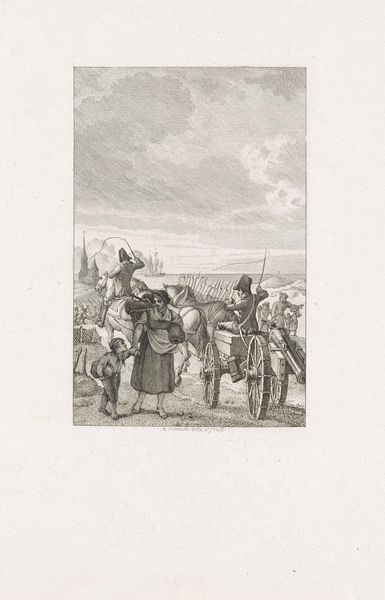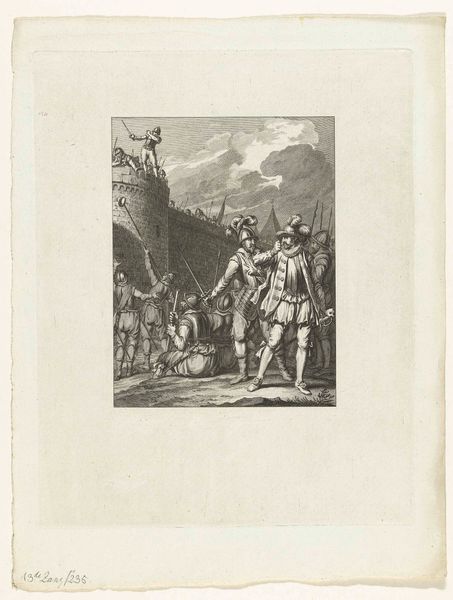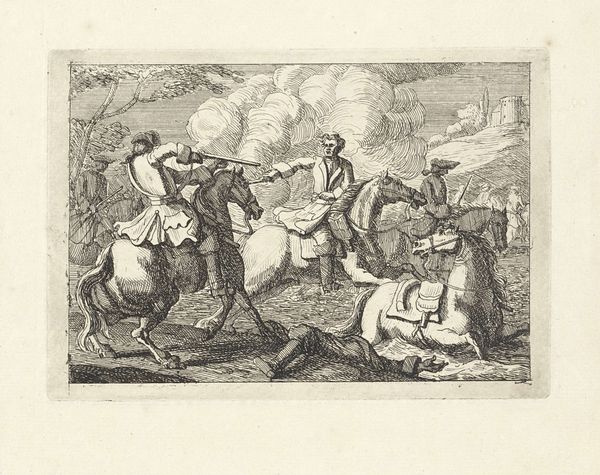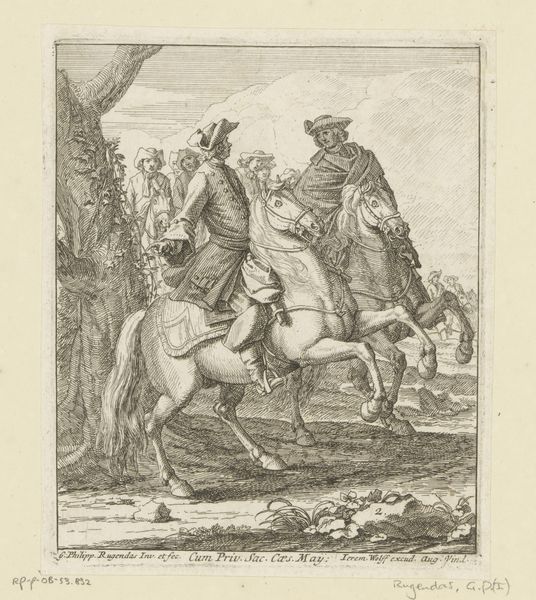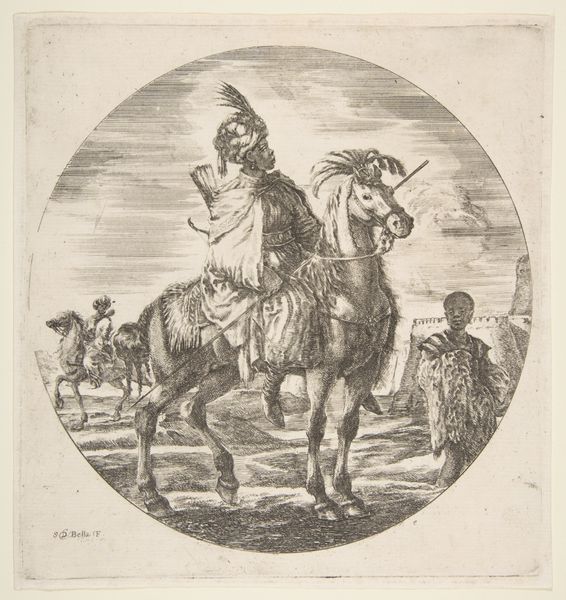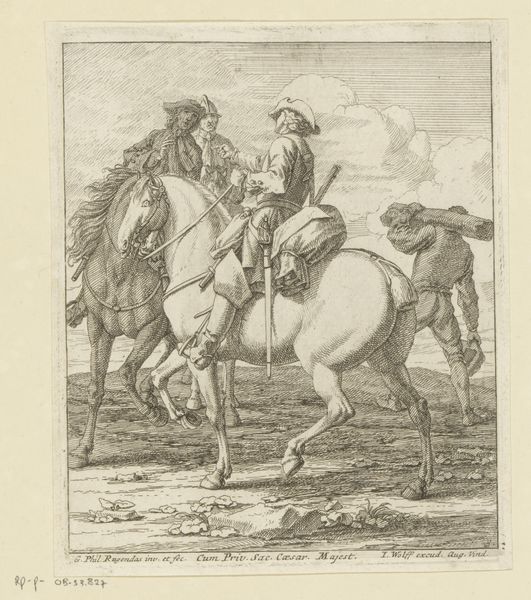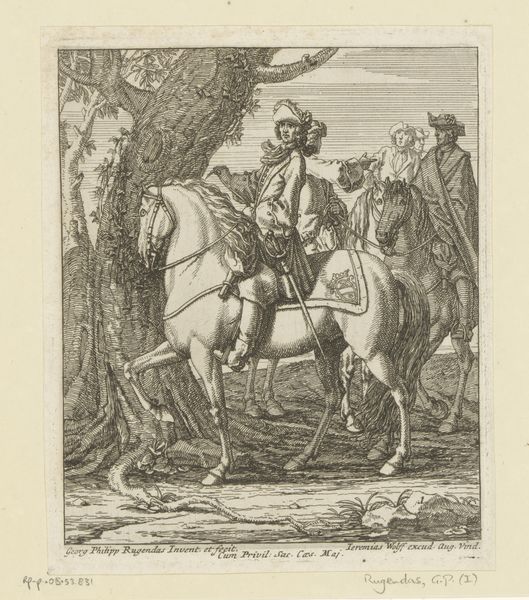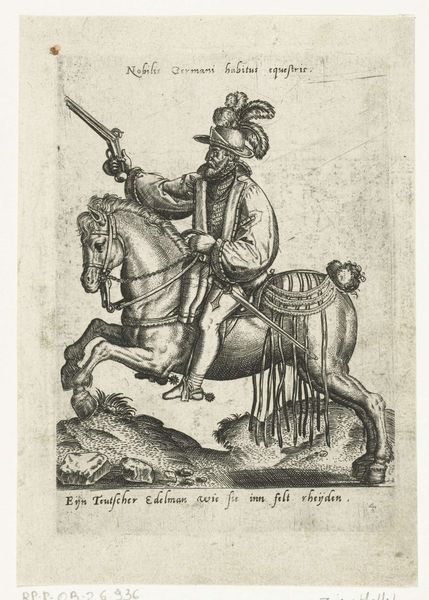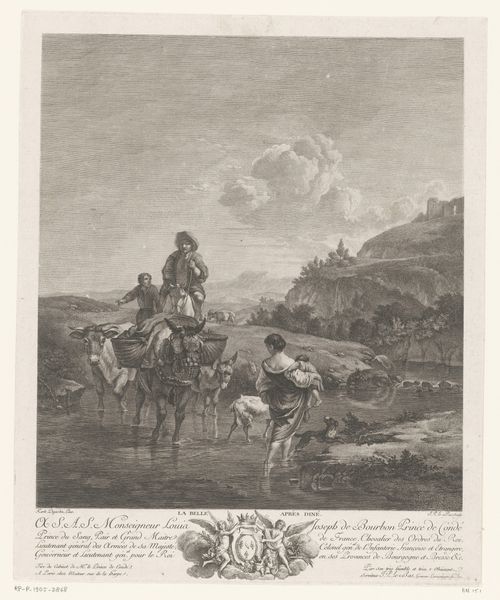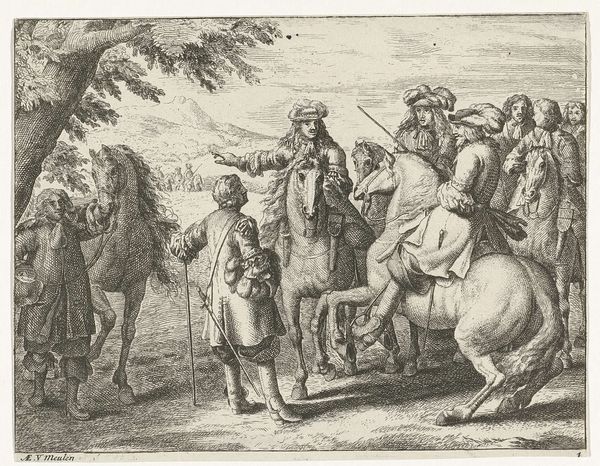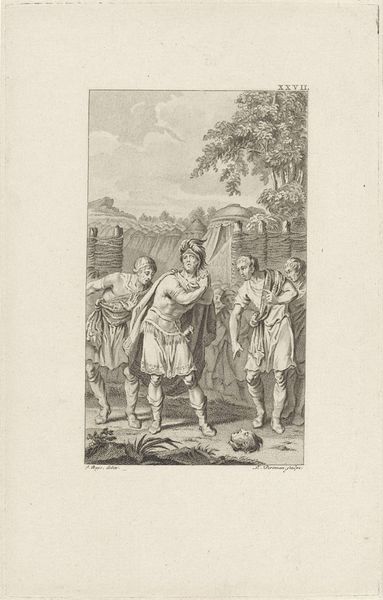
print, engraving
#
neoclacissism
# print
#
old engraving style
#
landscape
#
figuration
#
archive photography
#
historical photography
#
history-painting
#
academic-art
#
engraving
Dimensions: height 211 mm, width 135 mm
Copyright: Rijks Museum: Open Domain
Editor: This is "Caesar en Ariovistus," an engraving from 1799 by Ludwig Gottlieb Portman, currently at the Rijksmuseum. It feels…stiff, almost staged, like a history tableau. What story do you see unfolding in this piece? Curator: This work seems to capture a pivotal, yet artificially posed, moment in history. Look at Caesar and Ariovistus – these leaders and their entourages appear presented rather than realistically engaged. Consider what symbols Portman, working during the Neoclassical period, might be consciously imbuing here. Editor: Well, I immediately see the contrast in their attire – Caesar’s Roman armor versus what looks like traditional Germanic clothing on Ariovistus. Is that deliberate, a way of visually setting them apart as civilized versus…less so? Curator: Precisely! It speaks volumes about how cultures represented themselves and their adversaries. This image serves to reinforce a particular cultural narrative, doesn’t it? The rendering of each figure, down to the folds in their garments and the expressions on their faces, subtly echoes power dynamics through codified symbolism. Editor: It's fascinating how the simple act of choosing what to depict, and how, creates such a strong statement about cultural memory. I never thought about engravings carrying that much cultural weight. Curator: These images were reproduced and disseminated widely, reinforcing certain perspectives of the past within a broader culture. Visual narratives solidify over time through depictions like these. What does that imply? Editor: So, what seems like a simple illustration actually becomes a tool for shaping how we collectively remember and understand history. I'll definitely look at engravings differently from now on. Curator: Indeed. Now, considering our time, ask yourself how artists today create visual symbols for constructing cultural memories. That thought might be a worthwhile exercise.
Comments
No comments
Be the first to comment and join the conversation on the ultimate creative platform.
